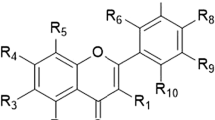Abstract
Complex preparations based on heparins of animal and vegetable origin with the inclusion of glutamic acid in a weight ratio of 1 : 4 were obtained. High molecular weight (HMН) and low molecular weight (LMH) commercial preparations of heparins were used as heparins of animal origin; heparinoid was used as heparin of plant origin, isolated from the roots of the peony Akademik Sadovnichiy (heparinoid). Their influence on the state of plasma hemostasis under in vitro conditions was studied in a comparative aspect. It has been established that all complex compounds have anticoagulant activity, which, according to the results of our studies, is realized by a different mechanism of their action on blood coagulation—on the internal, external, or general pathways of blood coagulation. HMН complexes with glutamic acid had an antithrombin effect, affecting the internal and general coagulation pathways, while LMH complexes with glutamic acid, exerting anti-Xa activity, affected the internal pathway of coagulation activation, and the combination of heparinoid with glutamic acid inhibited factors of not only internal but also external ways of blood coagulation. In addition, the latter compound exhibited weak antithrombin activity. It was also shown that all heparin complexes prevented fibrin polymerization, increasing the fibrin depolymerization activity of plasma, and in the heparinoid compound, this activity was higher by 10–17% compared to other commercial agents. Thus, the best anticoagulant in terms of efficacy and safety is the heparinoid complex with glutamic acid.
Similar content being viewed by others
REFERENCES
Barkagan, Z.S. and Momot, A.P., Diagnostika i kontroliruemaya terapiya narushenii gemostaza (Diagnosis and Controlled Therapy of Hemostasis Disorders), Moscow: N’yudiamed, 2008.
Berkovskii, A.L., Sergeeva, E.V., Suvorov, A.V., et al., Metody opredeleniya aktivnosti geparina. Uchebno-metodicheskoe posobie (Methods for Determining Heparin Activity), Moscow: Gos. Byudzhet. Obrazovat. Uchrezhd. Dopolnitel’nogo Prof. Obrazovaniya Ross. Med. Akad. Poslediplom. Obraz., 2015.
Beurskens, D.M.H., Huckriede, J.P., and Schrijver, R., et al., The anticoagulant and nonanticoagulant properties of heparin, Thromb. Haemostasis, 2020, vol. 120, no. 10, p. 1371−1383. https://doi.org/10.1055/s-0040-1715460
Byshevskii, A.Sh., Galyan, S.L., Kalinin, E.P., et al., Self-assembly of fibrin inhibitors of plant origin, Meditsinskaya Nauka i Obrazovanie Urala, 2012, vol. 13, no. 1, pp. 163–170.
Krichevskii, L.A., Low-molecular-weight heparins’ role in current strategies for controlling blood coagulation, Anaesthesia Critical Care & Pain Medicine, 2015, vol. 117, no. 16, pp. 42–48.
Krishtanov, N.A., Safonova, M.Yu., Bolotova V.Ts., et al., The prospects of the use of vegetable polysaccharides as medical and medical and preventive drugs, Vestn. Voronezhsk. Gos. Univ. Ser.: Khimiya. Biologiya. Farmatsiya, 2005, no. 1, pp. 212–221.
Kuznetsova, S.A., Drozd, N.N., Kuznetsov, B.N., et al., Anticoagulant, RF Patent no. 2399377, 2010.
Kuznik, B.I., Kletochnye i molekulyarnye mekhanizmy regulyatsii sistemy gemostaza v norme i patologii (Cellular and Molecular Mechanisms of the Hemostasis System Regulation in Normal and Pathological Conditions), Chita: Ekspress-izdatel’stvo, 2010.
Li, H., Mao, W., Hou, Y., et al., Preparation, structure and anticoagulant activity of a low molecular weight fraction produced by mild acid hydrolysis of sulfated rhamnan from Monostroma latissimum, Bioresour. Technol., 2012, vol. 114, pp. 414–418.
Lyapina, L.A., Grigor’eva, M.E., Obergan, T.Yu., and Shubina, T.A., Teoreticheskie i prakticheskie voprosy izucheniya funktsional’nogo sostoyaniya protivosvertyvayushchei sistemy krovi (Theoretical and Practical Issues of Studying the Functional State of the Blood Anticoagulant System), Moscow: Advansed Solyushnz, 2012.
Lyapina, M.G., Uspenskaya, M.S., and Maistrenko, E.S., On the mechanism of the anticoagulant effect of the extract from the roots of Paeonia lactiflora, Mezhdunarodnyi Zhurnal Prikladnykh i Fundamental’nykh Issledovanii, 2016, no. 11, pp. 1091–1093.
Marbet, G.A., Heparins, Ther. Umsch., vol. 60, no. 1, pp. 10–13. https://doi.org/10.1024/0040-5930.60.1.10
Nikolaeva, L.S. and Lyapina, L.A., Metod sozdaniya novykh vysokoaktivnykh antikoagulyantov krovi na osnove termodinamicheskikh modelei khimicheskikh ravnovesii i koagulyatsionnogo analiza in vivo i in vitro (Method for Creating New Highly Active Blood Anticoagulants Based on Thermodynamic Models of Chemical Equilibrium and Coagulation Analysis In Vivo and In Vitro), Moscow: Kim L.A., 2019.
Onishi, A., Ange, K.St., Dordick, J.S., and Linhardt, R.J., Heparin and anticoagulation, Front. Biosci., 2016, vol. 21, no. 7, pp. 1372–1392. https://doi.org/10.2741/4462
Pawlaczyk, I., Czerchawski, L., Kuliczkowski, W., et al., Anticoagulant and antiplatelet activity of polyphenolic-polysaccharide preparation isolated from the medicinal plant Erigeron canadensis L., Thromb. Res., 2011, vol. 127, no. 4, pp. 328–340.
Shestakov, V.A., Principles of correction of hyperheparinematic bleeding, Grudnaya Khirurgiya, 1975, no. 2, pp. 41–44.
Shubina, T.A. and Obergan, T.Yu., Funktsional’noe sostoyanie protivosvertyvayushchei sistemy krovi. Prakticheskie voprosy (Functional State of the Anticoagulant System of Blood. Practical Issues), Moscow: Kim L.A., 2021.
Struchkova, I.V. and Brilkina, A.A., Aminokisloty. Uchebno-metodicheskoe posobie (Amino Acids. Textbook), Nizhnii Novgorod: Nizhegorodsk. Gos. Univ., 2016.
Wu, M., Xu, L., Zhao, L., et al., Structural analysis and anticoagulant activities of the novel sulfated fucan possessing a regular well-defined repeating unit from sea cucumber, Mar. Drugs, 2015, vol. 13, no. 4, pp. 2063–2084. https://doi.org/10.3390/md13042063
Xiao, C., Lian, W., Zhou, L., et al., Interactions between depolymerized fucosylated glycosaminoglycan and coagulation proteases or inhibitors, Thromb. Res., 2016, vol. 146, pp. 59–68. https://doi.org/10.1016/j.thromres.2016.08.027
Zhang, S.B., In vitro antithrombotic activities of peanut protein hydrolysates, Food Chem., 2016, vol. 202, pp. 1–8. https://doi.org/10.1016/j.foodchem.2016.01.108
Author information
Authors and Affiliations
Corresponding author
Ethics declarations
The authors declare that they have no conflicts of interest.
All applicable international, national and/or institutional guidelines for the care and use of animals have been followed.
Rights and permissions
About this article
Cite this article
Uspenskaya, M.S., Lyapina, L.A., Sorokoletov, S.M. et al. Comparative Studies of Complex Products Based on Heparins of Animal and Plant Origin. Biol Bull Rev 13, 572–577 (2023). https://doi.org/10.1134/S2079086423060166
Received:
Revised:
Accepted:
Published:
Issue Date:
DOI: https://doi.org/10.1134/S2079086423060166




